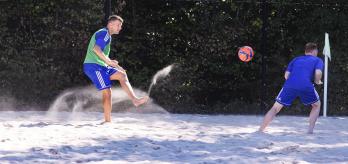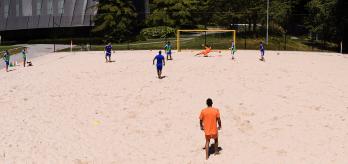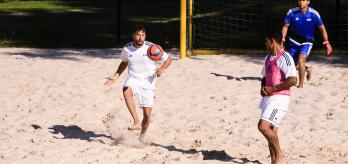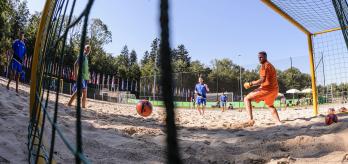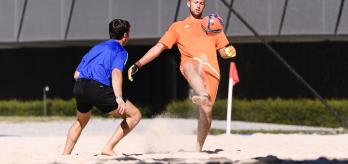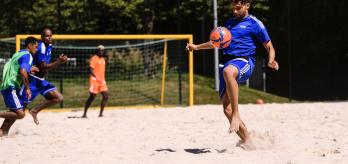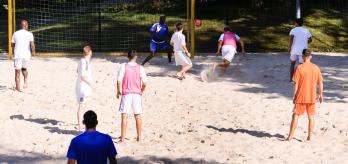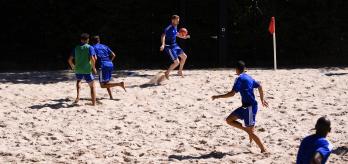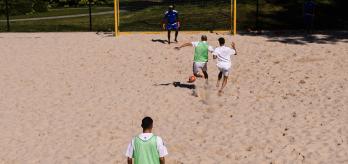Organisation
-
Using a full-size pitch, two teams of five compete against each other and organise themselves tactically based on the coach’s instructions.
Explanation
-
The exercise always starts from one of the two goalkeepers and aims to work on building attacks in the specific formation set by the coach. Here, Schirinzi starts with a 1‑3‑1 formation (attacking team).
-
The coach asks the out‑of‑possession team to defend passively to allow the in‑possession team to grasp all aspects of the formation and work on different passing combinations.
Variations
-
Organise the in‑possession team in a 1‑2‑1‑1 formation.
-
Organise the in‑possession team in a 1‑2‑2 formation.
-
Organise the in‑possession team in a 1‑1‑2‑1 formation.
-
Organise the in‑possession team in a 1‑1‑3 formation.
Coaching points
-
Ask the out‑of‑possession team to defend passively to allow the in‑possession team to work on their tactical organisation.
-
Vary the direction of the attacks.
Advantages
-
Players are distributed across the defensive zone in an ideal way and can form a compact unit
-
A suitable formation when the team are dominant and the opposing team have pressed too hard
-
Allows teams to retain possession for long periods and build up slowly from the back
Disadvantages
-
Considerable distances between the wide defenders and attacker make it difficult for players to support each other
-
The attacker is often isolated
-
Few attacking options if players fail to progress up the pitch
Advantages
-
Players are well distributed across the length of the pitchm the back
Disadvantages
-
The team fail to use the full width of the pitch The defenders’ positioning is not clearly defined
-
Attacks become very predictable, with the majority involving a long ball played up to the attacker
Advantages
-
Players are well distributed across the length and width of the pitch
-
Allows adventurous wingers to attack frequentlyat pace
Disadvantages
-
Demands sound tactical understanding of players to take up good defensive positions and regularly switch to mark zonally
-
The central defender is likely to face many one on one situations
Advantages
-
A clear distinction between attack and defence
-
Players are well distributed across the width of the pitch
Disadvantages
-
Attackers tend to neglect their defensive duties
-
A lot of space between the lines
-
Defensive positioning means that there is no one player tasked with marking the opposing attacker
Advantages
-
Adopted to apply constant pressure on the opposing team and prevent them from organising themselves
Disadvantages
-
Vulnerable to counter attacks
-
Players have to cover a lot of ground.
-
Only suitable for players who have a strong ability to compete at a high tempo







